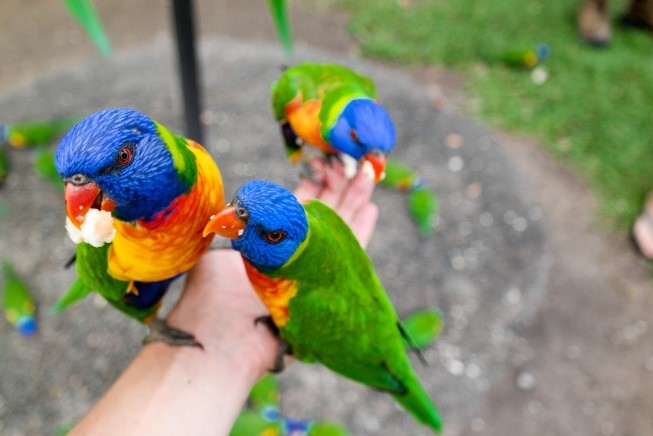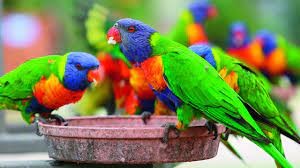
Experiencing the delightful presence of Australian birds and even befriending them is one of the pleasures of life here down under.
If you have a big heart and the desire to educate yourself on the do’s and don’ts of attracting them then gaining their trust will change you forever!
So, what are you waiting for?
1. What are the right foods to feed Aussie birds?
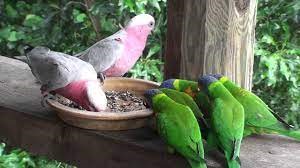
Offering food to the birds is a great way to help them see you as part of the flock, and help the birds realise that you mean no harm.
Around 30-50% of all households in Australia regularly feed birds at their home. This means millions of people need to know the rules to make sure they are feeding them the correct way as mistakes can be made!
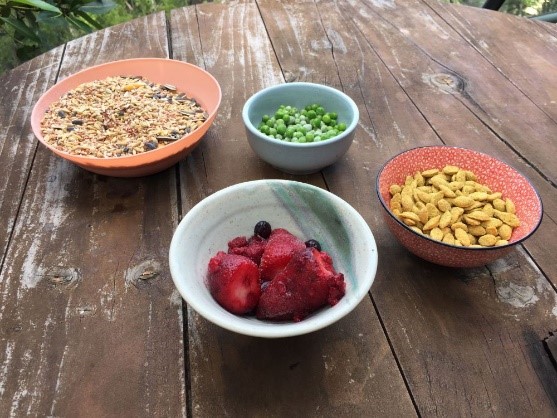
Although seed mixes are common, you can attract many different species by putting out a variety of edible things: nuts, berries, chopped fruit, even frozen corn and peas all work. Although a lot of people offer mincemeat to Magpies and Kookaburras, it can be harmful.
Thankfully most birds only call in for a passing snack and have their main dietary intake as natural
The keys to feeding native birds the correct way are: –
- Not to provide too much food so that they get most of their diet the natural way
- Keep the bird feeder clean by cleaning it thoroughly every day
- Avoid anything processed, this includes bread and mince, or foods that contain sugar or salt
- Use seeds or commercial pet food
- Change what food you give them and even the timing so that they learn not to rely on the offering but find it as a nice surprise if they visit
Although wild birds do seem to like being fed it is important to remember birds don’t need feeders, they are really for us!
2. What is wrong with feeding birds in the back yard?
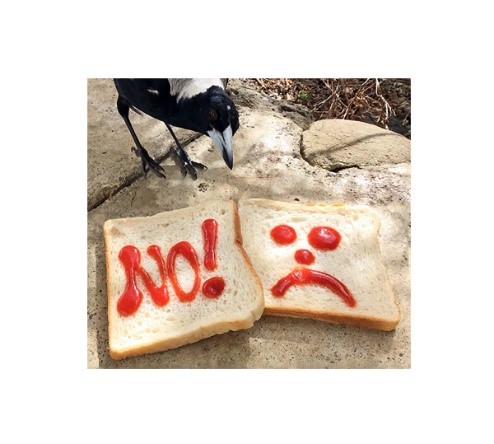
Everyone needs to be aware of the dangers of feeding wild birds and adjust or stop the pastime if they are harming them.
Whilst in the northern hemisphere, feeding birds is acceptable, in Australia there is much debate about feeding birds in the backyard. Awareness of the alarming consequences of feeding birds the wrong food is commonly known. Most Aussies are knowledgeable about feeding birds only ever a small portion of bread or any processed food.
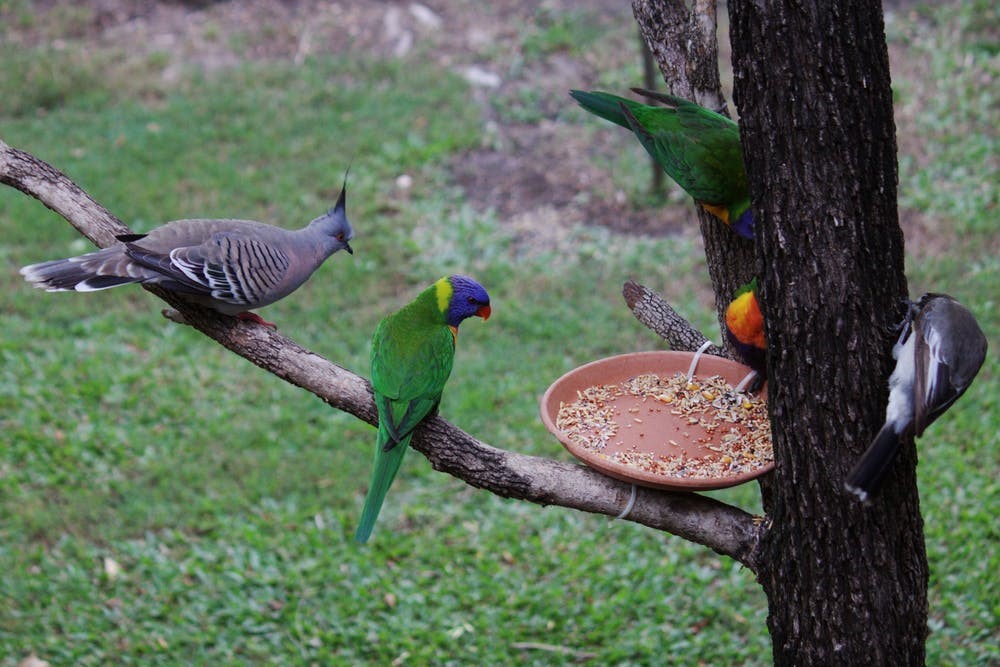
There is concern that by constantly providing food for birds they will become reliant on it as a food source instead of naturally foraging for food. It is best that birds see the food as passing snack and only as a small proportion of their natural daily diet. Think of it as a Tim Tam or a cup of tea!
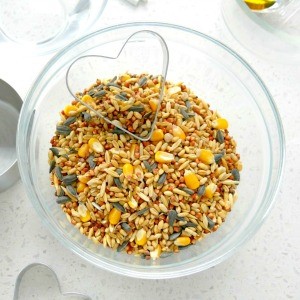
It is recommended to buy seed which is a high-quality mix rather than low grade seed, to keep them healthy. Feeders can spread disease so need to be cleaned every day.
Backyard feeding can favour the larger more aggressive birds. Birds that eat anything like Currawongs, Magpies and Kookaburras can increase in numbers over time, forcing smaller species from the area. If large flocks of birds or noisy Miners start coming begin feeding at the same time it is best to cease feeding so to encourage a diversity of species in the yard.
3. Which flowering plants attract birds into the garden?
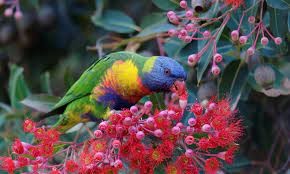
A variety of native shrubs not only look attractive but provide habitat and cover for them to live. Opting to have flowering plants and shrubs which have nectar-filled flowers provide safe, healthy food for blossom feeding birds.
Bird societies approve of growing plants and shrubs that attract birds in contrast to giving them a constant supply of artificial food. Creating a bird habitat through planting and providing water is kinder than regularly feeding birds in the home garden.
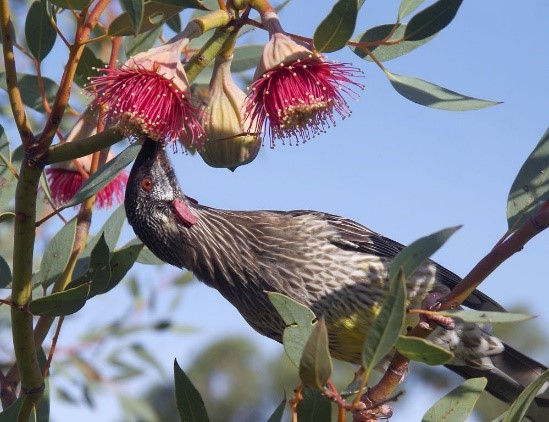
The best variety of flowering native shrubs are: –
- Bottlebrushes (Callistemon species), have bright nectar-filled flowers that attract Lorikeets, Rosellas, and Honeyeaters as well as many insects that feeds the smaller birds. Bottlebrushes can tolerate wetter soils than most natives and commonly red in colour but different varieties from small trees to compact shrubs can be found in different colours.
- Grevilleas have a denser and pricklier foliage giving birds better protection from predators and provides safe nesting sites. They range from ground cover and compact shrubs to tall trees. The large-flowered hybrids bloom all year and can be found in a variety of colours.
- Banksias are not only nectar bearing attracting birds like wattle birds, but they also carry seeds, attracting larger birds like Cockatoos. They also attract insects and shelter.
- Wattles (Acacias) know provide good cover for birds as well as providing food in the form of seeds and insects. They can be found as small to medium trees, growing from a small size or being up to 3-5m in height.
4. Which grasses and non-native plants attract birds
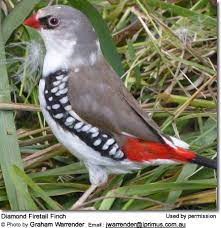
The seeds of native grasses such as Kangaroo grass and Wallaby grass are favourite foods for Firetails and Finches. Little birds such as thornbills and wrens hunt caterpillars and aphids and are good at keeping common garden pests under control.
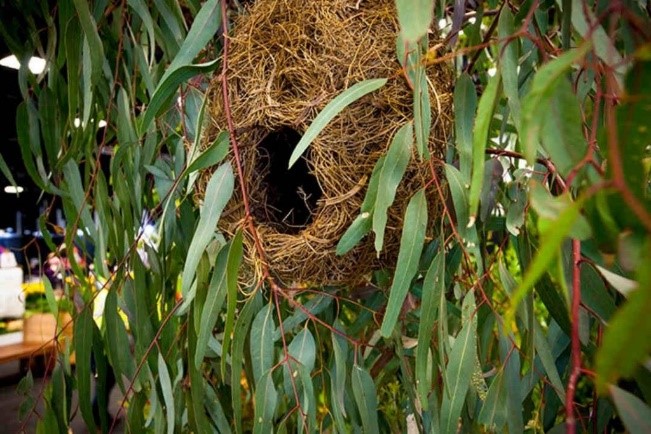
Little birds often stay low to the ground so planting native grasses in clumps of grasses such as Meadow Rice Grass near ground-hugging shrubs means little birds have a continuous range of safe zones to forage. Grasses also provide a good source of nesting material for birds.
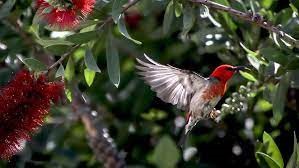
Providing an abundance of nectar for most the year can be achieved by planting non- native plants such as Camellias reliably bring birds into their garden by flowering late summer to autumn. Japonicas bloom from winter into spring and their dense foliage also offers shelter and safety.
5. Can Kookaburras become your friend?
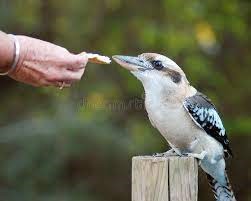
Many bird species may eagerly come to the food you have left out but there is a range of differences between all birds.
Some can become tame enough to take food from our hand especially the Kookaburra. Yet it is good to remember that there is no such thing as a naturally tame bird and humans frighten them until you have gained its trust. Both male and female Kookaburras have similar plumage, which is mainly brown, white, or cream. Males have a small patch of blue-green feathers in the centre of the rump whereas these feathers are absent or reduced in the female.
Bird lovers say that birds can develop an emotional bond to people and recognise your friendly face. Laughing Kookaburras are confident and social birds who hang around in groups and will give a loud chorus of laughter before coming down to accept scraps of meat from their human neighbours. A Kookaburra will even eat out of a human hand.
To encourage them to visit, having a large variety of native shrubs and trees in their surroundings give birds plenty of sticks and leaves to build their nests. Golden Wattle, Paperbark, Bottlebrush and Blueberry Ash are all known to attract Kookaburras for shelter and food. Having local native plants will also attract insects including stick insects and native bees as well as lizards all of which are food for kookaburras. They are great assets to have around your garden as they have a strong beak to successfully hunt large and dangerous snakes.
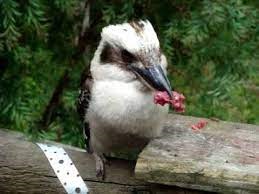
Whilst mincemeat is known as a common food for humans to feed them with, it does not provide them with the nutrients they need. Kookaburras have adapted to eat the whole of their prey, so when mincemeat is fed to them, they are missing out on all the bones and a vital supply of calcium.
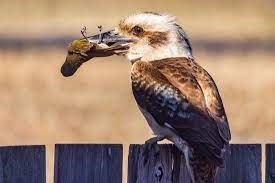
6. Can you form a friendship with a Magpies?
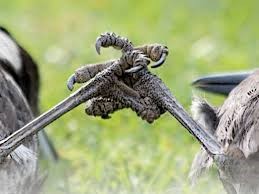
Once you have made friends with a Magpie you have made a friend for life! When the magpies know they are welcome and have a safe place in your garden your garden can become a magnet for roosting and attracting exuberant and noisy juveniles each year. Even if these free-living magpies can naturally move on to find another territory, this is usually not too far away.
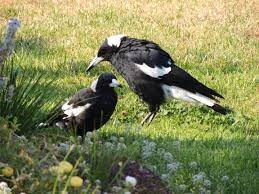
Much bigger than the European magpie these intelligent birds do not depend on humans for food and shelter. One hearty warble from these special birds gives you an instant mood booster and positive experience.
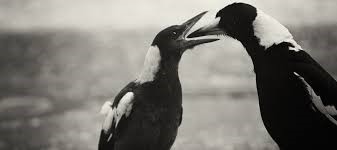
Magpies can recognise and remember individual faces for many years and just as they will remember someone who is good to them, they will also remember negative encounters. From August to September swooping magpies (mostly males on guard duty) are acting as nest defenders. The risk is posed by and unknown person who was not present at the time of nest building, is classed as a territorial intruder and consequently a potential threat. The warning swoop is asking the person to step away from the nest area of if the warnings are ignored, they may try to swoop at the head.
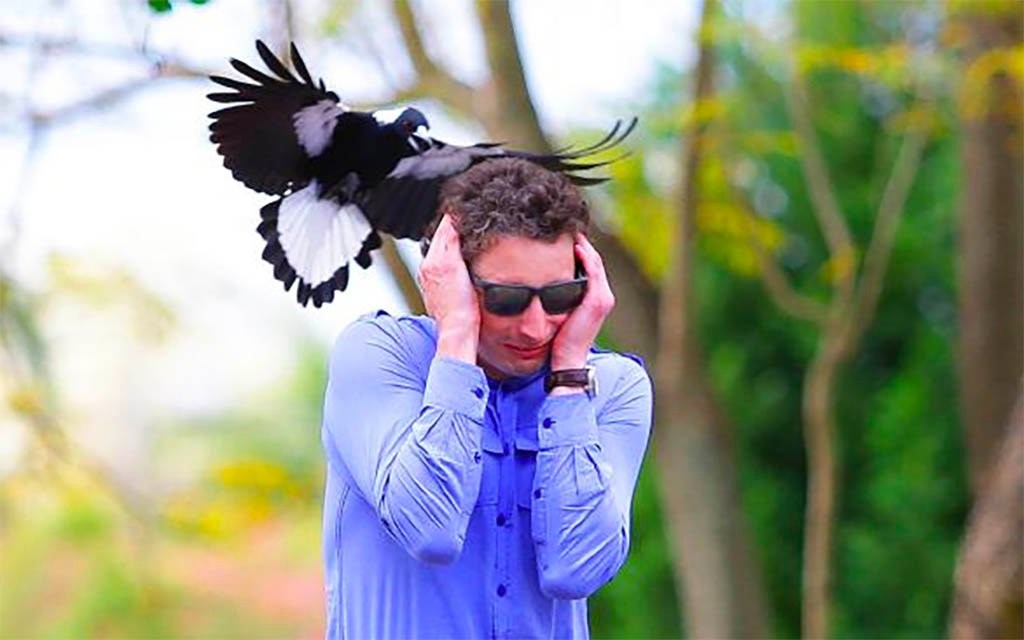
Over 80% of all breeding magpies that permanently live on properties, never swoop on people they know, and they can extend this bond to trusting certain people around their offspring. Magpies are friendly sociable birds who watch every move you make from your kitchen window or from where you are sitting. Some may even venture into the home and beg for food. Since magpies can live between 25-30 years, they can have a lifelong friendship with humans.
7. How to attract an increase in variety of species into the yard or balcony
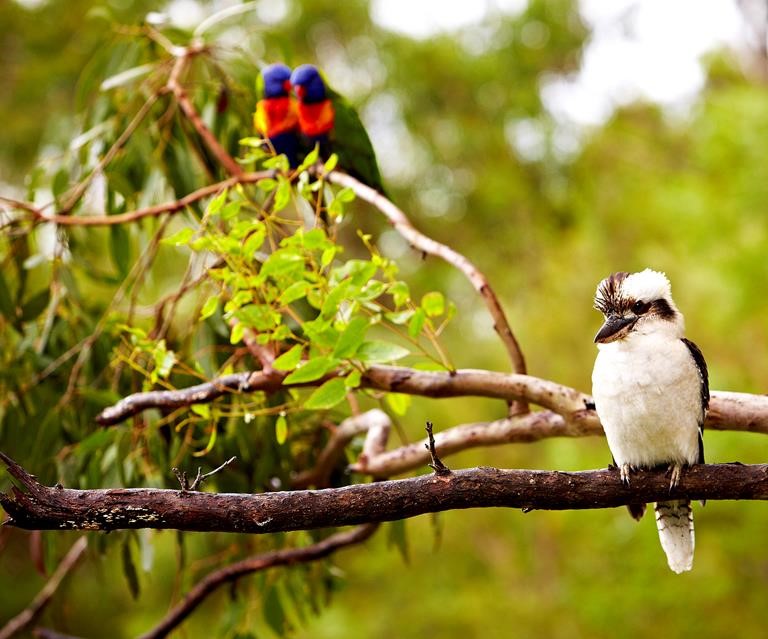
The species you attract will depend on what your garden, yard, or even your balcony has to offer.
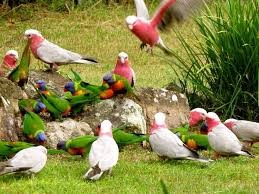
Fresh food, water and shelter is the best way of attracting all birds. Gardens with both seed and birdbaths see an increase in species such as Sulphur-crested Cockatoos, Crimson Rosellas and Galahs. Crested pigeons are very adaptable and compete fiercely for food and territory with doves in Australian gardens.
Rainbow Lorikeets, Red Wattlebirds and Noisy Minors prioritise food over birdbaths. While Superb Fairy Wrens visit gardens where food is provided, Willie Wagtails and Grey Fantails where only water is available.
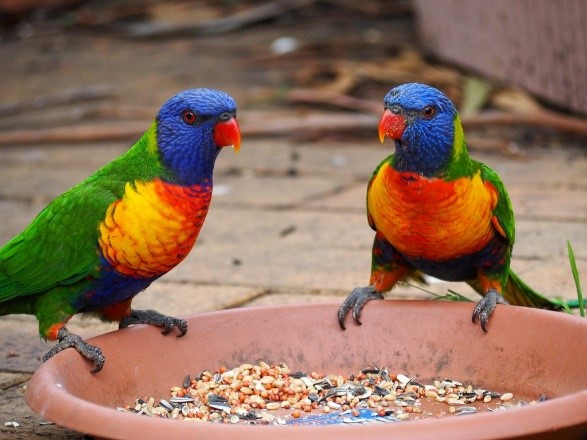
When feeding birds you can leave out a shallow dish or hang treats directly from the balcony or trees. Putting out a bird bath or nesting material like grasses and dead trees can encourage many parrots to stop for a quick visit. Although encouraging wild parrots to feed from you hand may mean they become overtrusting of humans and not all humans may be as kind to them as you are!
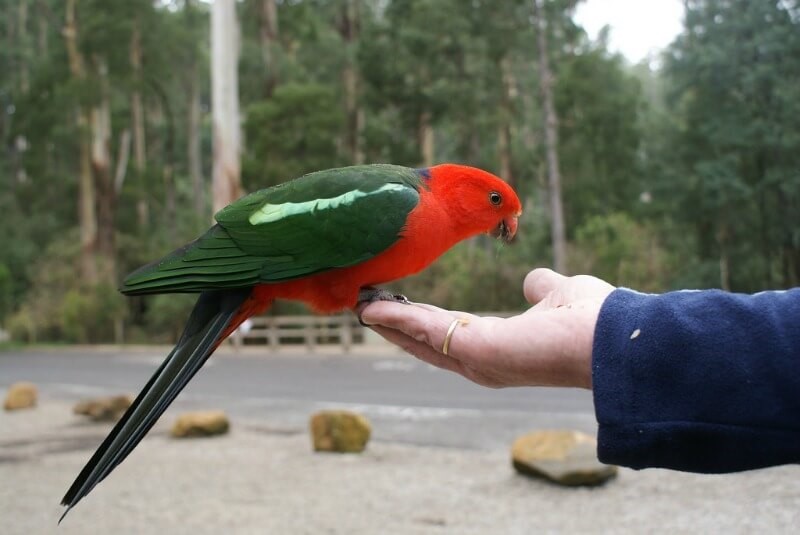
8. What to do about the cat?
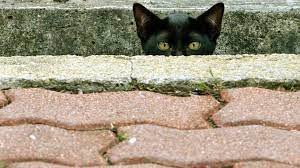
Rural, suburban and feral cats are all guilty of killing thousands of birds every night across Australia. So before attracting birds to your garden you need to ask the question ‘Are you attracting birds to their death?’ as cats are brutal killing machines.
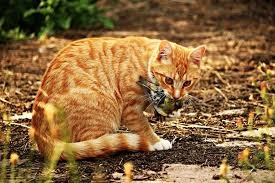
The cats can’t help it as being predators they have it in their nature. So if you have a cat and allow it outside near the bird feeders clearly this will keep birds away. Some ways to keep the birds safe from cats are by:-
- Making it hard for the cats to reach the bird feeders by hanging the feeders from a tall pole.
- Spray cat deterrent around the pole and in the garden where you spot cats sitting. Strong odours like mint, cinnamon, citrus vinegar and pepper as well as household cleaners can be good cat deterrents.
- Add prickly spikes. Cats like to stalk the birds by crouching down low then slowly creeping up on the prey. So by adding plants with thorns or foliage like roses or cactus they will feel the sharp pain.
- Lay plastic Scat Mats on the ground or wrap them around feeder poles. These mats have pointy spikes which makes walking down them irritating and unpleasant for the cats.
9. Start to gain their trust by talking to them
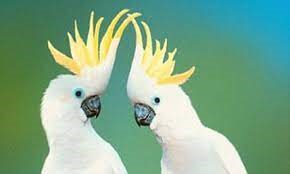
Some birds can form emotional bonds with people, so it is important to gain their trust for them to become your friend.
Even if they initially are shy, they can become familiar with the sound of your voice and recognise your body language. Once they see you are not a threat, they will begin to recognise care, concern and interest.
By speaking to them softy and keeping your voice low, this will help the birds calm and relaxed.
Move slowly as sudden movements may frighten the bird especially when offering them their favourite treat. This will help them understand that you are friendly and mean them no harm.
10. How do you hand feed a wild bird?
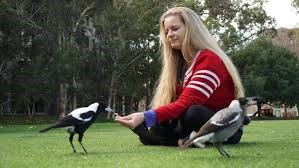
Even if the birds do not respond to your friendly gestures, it is best to wait a while before changing your activity. This signals to the bird that you are looking for a response from them.
Feed and talk to them regularly so the birds realise you talking to them is not a one-off event. If you can integrate yourself into the bird’s daily feeding routine this can make the birds as comfortable as possible and even eat out of your hand.
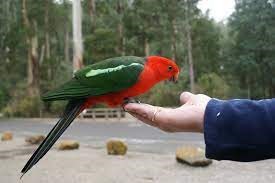
Once you feel they are becoming comfortable with you try holding some food in your hand, keeping the arm outstretched and away from your body. This may take some time as the bird needs to work up the nerve to take the food from your hand.
Keep as still as possible when holding out your hand and even hold your breath if they take the food. Never swallow as the bird may see that as a sign you are considering it for your next meal. Never close your hand or move your fingers as this may look threatening to the bird. Birds are nervous creatures, and the tiniest movement may look threatening and the risk for them is a hand that closes with their beak or part of their body trapped inside.
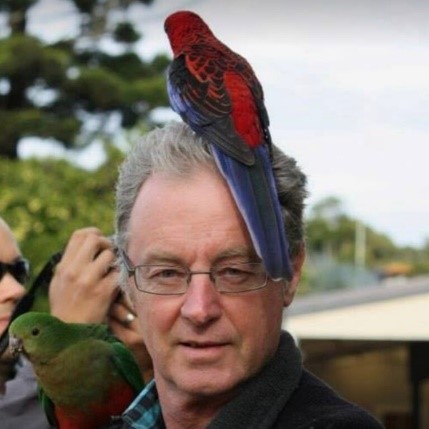
Once the wild bird understands good things happen when they visit you have set this trust as a foundation for a long-lasting friendship and opened the door to the bird’s family and community!
